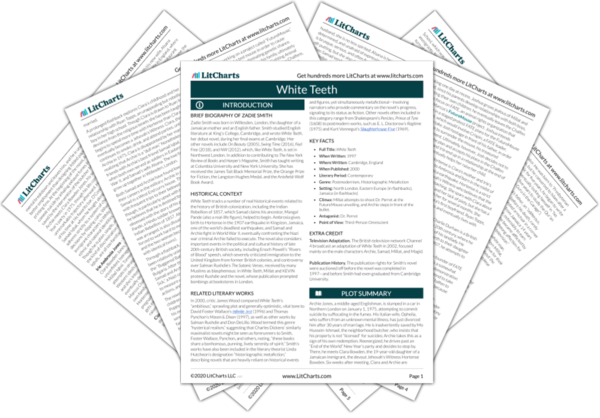Next
Summary
White Teeth Study Guide |
Next
Summary
|
Welcome to the LitCharts study guide on Zadie Smith's White Teeth. Created by the original team behind SparkNotes, LitCharts are the world's best literature guides.

Television Adaptation. The British television network Channel 4 broadcast an adaptation of White Teeth in 2002, focused mainly on the male characters Archie, Samad, Millat, and Magid.
Publication History. The publication rights for Smith’s novel were auctioned off before the novel was completed in 1997—and before Smith had even graduated from Cambridge University.